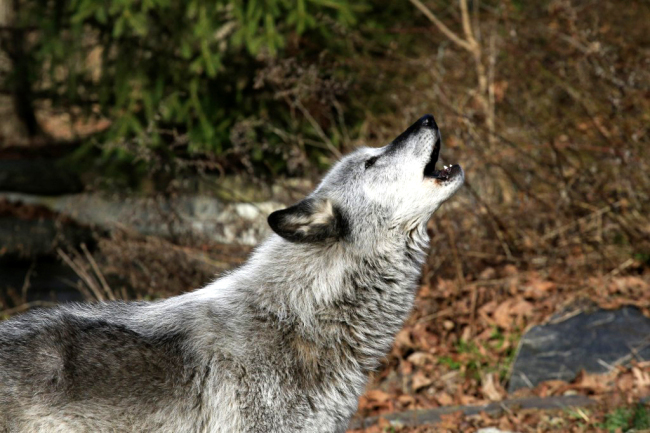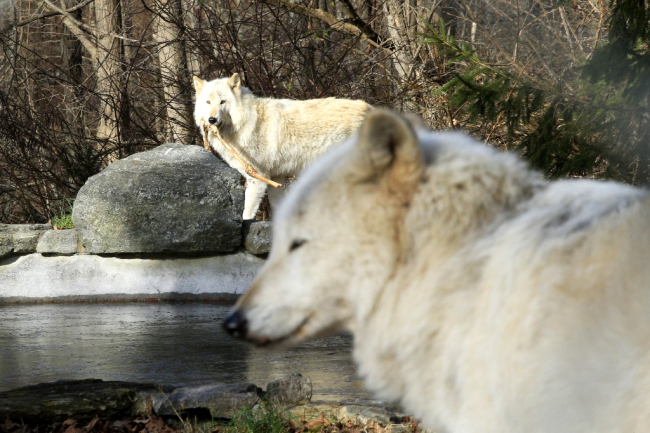Howling into the void? U.S. wolf recovery endangered by Trump
They thrive at teamwork, fight for their homes, and cherish their families above all else.
It is sometimes said there is no animal on Earth more like humans in their social behavior than wolves.
But the iconic species -- long a symbol of the free spirit of the American wilderness -- could soon be imperiled because of a decision by President Donald Trump's government to end protections that brought them back from the brink of extinction.

A wolf howls at a Wolf Conservation Center on December 6, 2020 in South Salem, New York. [Photo: AFP]
"Wolves right now have only recovered in about 10 percent of their historic range," Maggie Howell, executive director of the Wolf Conservation Center in upstate New York told AFP.
Historically, when states have fought to loosen safeguards, hunting and trapping has quickly followed, she says.
Now conservationists fear for the roughly 6,000 gray wolves in the lower-48 states when the new rule takes effect in January.
A quarter of a million wolves once roamed from coast to coast before European settlers embarked on campaigns of eradication that endured into the 20th Century.
Howell cups her hands around her mouth and lets out an "Ahwooo!"

Two Mexican wolves named Valentia and Diego walk inside a cage at a Wolf Conservation Center on December 6, 2020 in South Salem, New York. [Photo: AFP]
Three adult wolves -- Alawa, Zephyr and Nikai -- answer in unison, their spine-tingling howls seeming to multiply in the air, creating the impression of a much larger pack.
The trio is the center's "ambassadors," vital to educating visitors.
Brown and gray Alawa, meaning "sweetpea" in the native Algonquin language, has a temperament that matches her name and seeks out human attention like a family dog.
Their goings-on can be followed 24/7 on webcams and on social media, where they have hundreds of thousands of fans.
The 32-acre (13-hectare) center also houses around 40 of their critically endangered cousin species: the Mexican gray wolf, which numbers just shy of 200 in the wild, and the smaller red wolf, of which only eight tagged animals remain outside captivity.
- Elimination campaigns -
In October, the US removed gray wolves from the Endangered Species Act, where they were first listed in the 1970s when their numbers fell to around 1,000.
Normally, a delisting decision is a welcome sign of a robust recovery.

A wolf carries a bone at a Wolf Conservation Center on December 6, 2020 in South Salem, New York. [Photo: AFP]
But in this case, government commissioned independent experts questioned the scientific rationale and conservationists slammed the move as a devastating giveaway to hunters and ranchers.
Minnesota, Michigan and Wisconsin could all quickly resume hunting, which they were blocked from doing by a 2014 court order -- and wildlife groups estimate hundreds of wolves could be killed a year.
Rick McIntyre, a veteran national park ranger and author of "The Rise of Wolf 8," told AFP that vilification of the apex predator started with the arrival of Europeans in the 1600s.
By contrast, Native Americans lived alongside wolves in harmony for thousands of years, revering them in their mythology.
They also recognized their wider ecological importance, as shown in the Keewatin proverb: "The caribou feeds the wolf, but it is the wolf who keeps the caribou strong."
Research has confirmed the wolf's importance in thinning over-browsing herds of elk, which in turn prevents destruction of habitat.